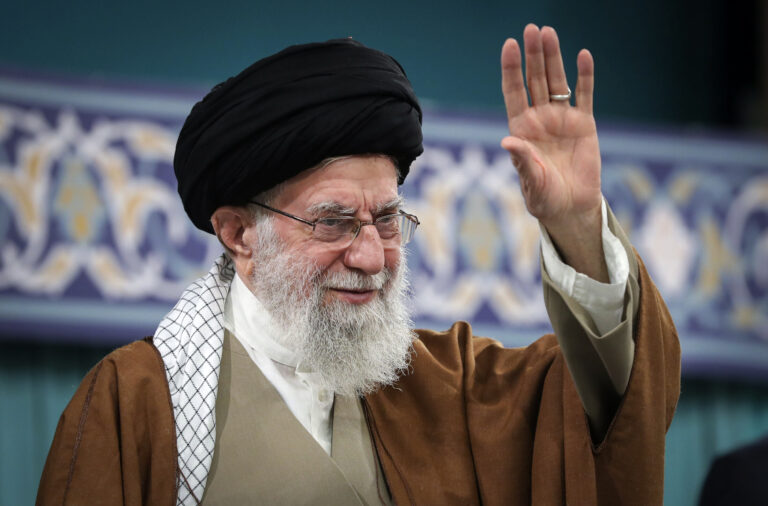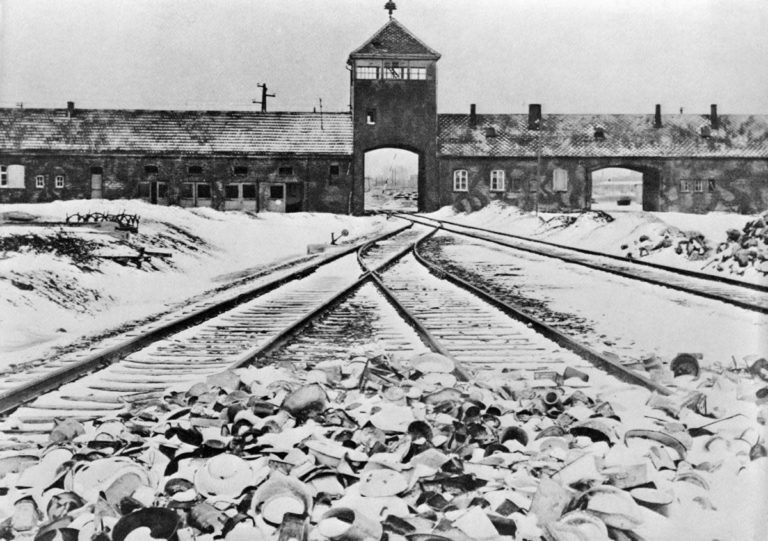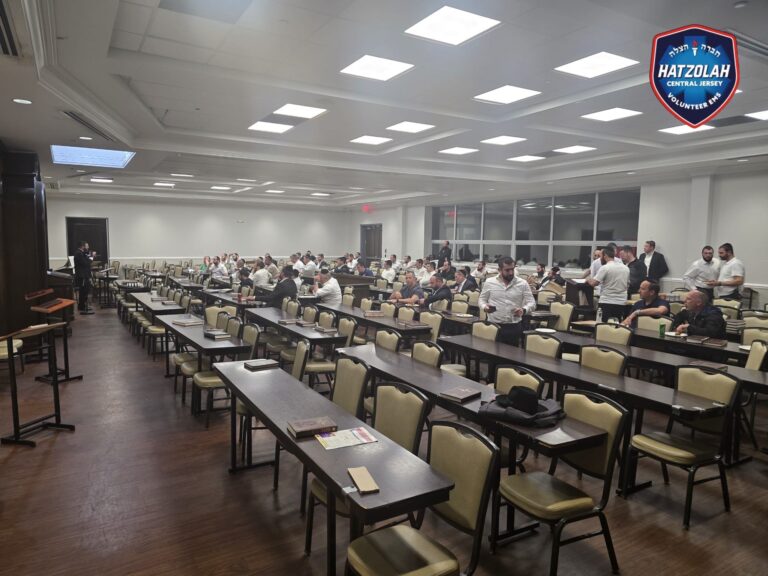V’haya ha’dam lachem l’os al ha’batim (12:13)
The Tosefos Yom Tov writes (Demai 7:3) that some people ask a powerful question based on the verse in Chaggai (2:9) “Gadol yihyeh kavod habayis hazeh ha’acharon min harishon” – the glory and honor of the last Beis Hamikdash will be even greater than that of the first. This verse is referring to the second Temple, which was destroyed almost 2000 years ago. In referring to it as the “last” one, it seemingly indicates that there won’t, G-d forbid, be another.
The Tosefos Yom Tov answers that many times the word “last” doesn’t mean the final one. Rather, it refers to the last one vis-à-vis the first one, even though there may indeed be others that come after it. Although this sounds a bit foreign grammatically, he cites two places where the Torah uses such language. One is in Parshas Shemos (4:8-9, the other is in Bereishis 33:2), in which Hashem tells Moshe that if the Jews won’t believe the first sign, they will trust in the last sign. Hashem adds that if they won’t believe the “last” sign, they will surely believe the third one in which Moshe will turn the water of the river into blood.
The Kehillas Yitzchok brings a clever hint to this proof from our verse, which literally means that the blood of the Passover-sacrifice will be a sign on the doors for Hashem to skip over that house. However, it can also be understood as stating that the blood (which was the third proof of Moshe’s legitimacy) will be a sign for you regarding the Temples, as if anybody attempts to prove from Chaggai 2:9 that the second Temple was the final one, we may now answer that the blood mentioned in our verse proves that it isn’t so.
UV’nei Yisroel asu kidvar Moshe vayishalu mi’Mitzrayim klei Kesef u’klei zahav u’semalos … v’gam tzeidah lo asu lahem (12:35-38)
The Torah testifies that prior to the actual Exodus from Egypt, the Jewish people followed Moshe’s instructions and borrowed expensive vessels and clothing from the Egyptians. Rav Isaac Sher points out how unbelievable it is that at the time when almost three million Jews were preparing to leave Egypt to travel into an unknown desert, they were busy borrowing luxury items and didn’t spend even a moment to prepare any food with which to sustain themselves.
This was due to the simple fact that the Jews were commanded to borrow these items from the Egyptians, but regarding food there were no such instructions. In fact, Rashi writes (11:2) that they weren’t even commanded to borrow the vessels and clothing, but merely requested. Even so, their sole focus was on fulfilling Hashem’s will. They understood and fully believed that just as He brought a miraculous end to their back-breaking enslavement, so too would He sustain them through the next stage of His Divine plan for them as long as they demonstrated their complete trust in Him and willingness to do His bidding.
Rav Yaakov Kamenetzky similarly notes that after waiting generations for the redemption, the long-awaited moment arrived shortly after midnight on the night of the slaying of the first-born. Pharaoh had had enough and finally announced their total and unconditional freedom. Nevertheless, not a soul attempted to act on this good news and leave for freedom, for the simple reason that Hashem commanded them not to exit their houses until the morning (12:22). Even an issue as weighty as national redemption is pushed aside if it comes at the expense of transgressing one of Hashem’s commandments. It was He who demonstrated in Egypt for all eternity that He runs the world as He sees fit, and one never loses out by following His commandments.
V’chol bechor adam b’vanecha tifdeh (13:13)
The plague of the slaying of the first-born didn’t distinguish between paternal first-born Egyptians and maternal first-borns, as both were killed. If the mitzvah of Pidyon HaBen – redemption of the first-born son – commemorates the fact that the Jewish first-borns were spared from this plague (13:2), why is it performed only with a maternal first-born and not also with a paternal first-born?
The Avnei Shoham answers by comparing Pidyon HaBen to the mitzvah of bikkurim. After a farmer puts in so much effort into plowing and planting, it seems quite natural that he should enjoy a good harvest. Bringing bikkurim to the Temple combats his instincts to take credit for the products of his labor and forget about the Divine assistance which made it possible. The Torah reminds him Who is really responsible for the crops by requiring him to bring the first fruits to the Temple.
Similarly, when a couple gets married, it seems natural that within a few years the wife should give birth to a child. To prevent the parents from taking this process for granted, the first-born son must be redeemed from the Kohen. This reminds them that what appeared natural is actually miraculous.
However, a reminder is necessary only when the birth would have otherwise appeared natural, such as a maternal first-born. In the event of a paternal first-born, meaning that the mother has previously been married, or a child born by Caesarian-section or following a miscarriage, it is already clear that the traditional order of events isn’t being followed, and no reminder is necessary.
Alternatively, Rav Akiva Eiger and Rav Yosef Chaim Zonnenfeld answer by questioning why it was necessary for the Jews to place the blood of the Korban Pesach on their doorposts to protect them. If Hashem slew the first-born, couldn’t He differentiate between the houses of the Jews and the Egyptians? It is also difficult to understand whether the first-born were slain by Hashem, as the Haggadah emphasizes that this plague was performed exclusively by Him, or by a destructive angel, as the Jews were told to place blood on their doorposts to protect them from the destroying angel (12:23).
To resolve both difficulties, they suggest that a maternal first-born can be easily distinguished, while a paternal first-born is harder to identify. The destroying angel slew the maternal first-borns where there was no room for error, and Hashem killed the paternal first-borns who required extra recognition.
In light of this explanation, we now understand that it wasn’t miraculous that the paternal first-borns were saved, as Hashem knew their identities and they were never in danger of an error. The maternal first-borns, however, required a miracle to be saved from the destroying angel, as the Gemora (Bava Kamma 60a) teaches that once permission is given to this angel to destroy, it doesn’t differentiate between the righteous and the wicked. Because Hashem had to miraculously protect them, they became holy for all generations and require redemption from a Kohen.
Answers to the weekly Points to Ponder are now available!
To receive the full version with answers email the author at [email protected].
Parsha Points to Ponder (and sources which discuss them):
1) The Medrash teaches (Eichah Rabbasi 1:28) that the Jews were punished and sent into exile for eating chometz on Pesach. Where is there any hint in the Torah that this transgression is punishable with national exile? (Genuzos HaGra)
2) When burning chometz before Pesach to remove it from our possessions (12:15), must one take care not to burn meat and milk products together in order to avoid transgressing the prohibition (23:19) against cooking meat and milk together? (Ma’adanei Asher 5769 Parshas Mishpatim)
3) Throughout the generations, Jews have suffered from “blood libels” – false charges that we kill non-Jewish children and use their blood when making matzah (12:18). As we know that these accusations are baseless, why does Hashem permit them to continue? (Kovetz Maamorim)
4)How were the Jews able to fulfill the mitzvah of wearing tefillin (13:16) during their 40-year sojourn in the desert when they are invalid without all four sections of the Torah contained within, and two of the required sections weren’t even taught by Moshe until the book of Devorim, in the last year of their travels through the wilderness? (Rashba Menachos 34a, Panim Yafos Devorim 26:17, Malbim, Ohr Gedalyahu, Chavatzeles HaSharon)
© 2010 by Oizer Alport.










